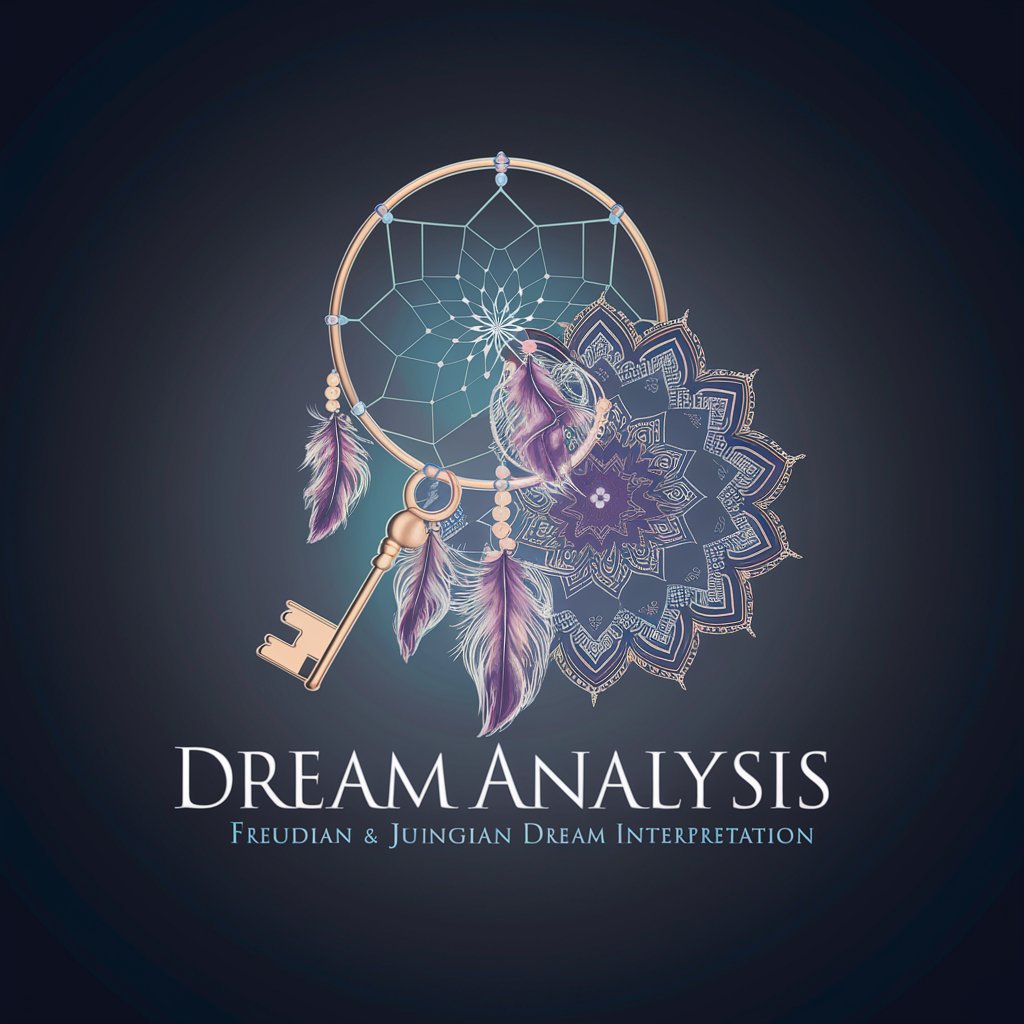Dream Analysis - Intuitive Dream Interpretation

Welcome! Let's uncover the meaning behind your dreams.
Unveiling the subconscious with AI
Can you describe a recent dream you've had?
What recurring symbols appear in your dreams?
How do your dreams make you feel upon waking?
Are there any dreams from your childhood that you remember vividly?
Get Embed Code
Introduction to Dream Analysis
Dream Analysis, as conceived in this context, leverages both Freudian and Jungian psychological frameworks to interpret the symbolic and manifest content of dreams. Its primary purpose is to offer insights into the unconscious mind, revealing underlying desires, conflicts, and archetypes that influence an individual's thoughts and behaviors. For example, analyzing a dream where one finds themselves endlessly running but never reaching a destination might be interpreted through a Freudian lens as a manifestation of an unresolved internal conflict or anxiety. Alternatively, from a Jungian perspective, the same dream could symbolize the individual's ongoing but stalled journey towards self-realization or individuation, suggesting a need to confront and integrate aspects of their shadow self into their conscious being. Powered by ChatGPT-4o。

Main Functions of Dream Analysis
Symbolic Interpretation
Example
Interpreting water as a symbol of the unconscious mind or emotions, depending on the dream context.
Scenario
In a dream where a person is swimming in a clear, calm ocean, this might symbolize a comfortable exploration of deep emotions or unconscious thoughts. Conversely, dreaming of drowning in turbulent waters could indicate feeling overwhelmed by emotions or unresolved issues.
Archetypal Analysis
Example
Identifying common figures or themes, such as the 'shadow' or 'anima/animus', and their role in the dreamer's psyche.
Scenario
A dream featuring a wise old man who offers guidance might be interpreted as an encounter with the 'wise old man' archetype, representing the collective wisdom of the unconscious and signaling the dreamer's need for inner guidance.
Free Association
Example
Encouraging the dreamer to explore seemingly random or disconnected thoughts and images that arise from the dream.
Scenario
If someone dreams of a childhood home, free association might reveal hidden feelings of security, loss, or unresolved family dynamics, offering insights into current emotional states or relationships.
Thematic Analysis
Example
Examining recurring themes or patterns across multiple dreams to discern broader psychological trends.
Scenario
For an individual who frequently dreams of being chased, this recurring theme might suggest a pattern of avoiding confrontations or difficult situations in waking life.
Ideal Users of Dream Analysis Services
Individuals Exploring Personal Growth
People interested in self-reflection and understanding their own behaviors, desires, and conflicts. Dream analysis can provide valuable insights into their subconscious, facilitating personal development and self-awareness.
Therapists and Counselors
Professionals in psychotherapy and counseling can use dream analysis as a tool to deepen their understanding of clients' internal worlds, enhancing therapeutic interventions and client understanding.
Writers and Creatives
Individuals engaged in creative fields may find inspiration in dream analysis, unlocking new avenues for creativity and exploring the depths of the human psyche to enrich their work.
Students and Academics
Those studying psychology, literature, or related fields might use dream analysis to gain practical insights into theoretical concepts, enriching their academic pursuits and research.

How to Use Dream Analysis
1. Start Your Journey
Visit yeschat.ai for a complimentary trial, accessible without the need for registration or a ChatGPT Plus subscription.
2. Describe Your Dream
Enter the details of your dream in a descriptive manner, focusing on emotions, symbols, and events that stood out.
3. Choose Your Analysis Type
Select whether you want a Freudian analysis focusing on desires and experiences, or a Jungian analysis emphasizing symbols and archetypes.
4. Receive Insights
Review the personalized analysis, which will explore the potential subconscious meanings and connections of your dream.
5. Reflect and Explore
Use the insights as a starting point for self-reflection or further discussion with a therapist or in a dream journal.
Try other advanced and practical GPTs
Keyword Wizard
Unveiling Insights with AI-Driven Keyword Exploration

入力された内容に関連するブランドを紹介する
Discover relevant brands effortlessly

Agile AI Assisted
Empowering Agile Teams with AI

Senku
Unleashing Creativity with AI-Powered Science

RGB CLI Assistant
Navigating Blockchain, Made Simpler

Chef's Companion
Empowering your culinary creativity with AI

Content Crafter
Crafting Content, Powering Brands

Environment analysis for urban planners
AI-Powered Urban Environment Insight

Jeannie, a Genius Genie Friend
Empowering insights at your fingertips.

Study GPT (Mechanics & Dynamics)
Empowering Mechanical Minds with AI

Career Compass
Navigating Your Career Path with AI

BEST GPTMODELS FOR EVERY USE
Empower your projects with AI-driven models

Dream Analysis Q&A
What makes Dream Analysis unique compared to other dream interpretation tools?
Dream Analysis stands out by offering both Freudian and Jungian perspectives, providing a comprehensive, tailored analysis based on well-established psychological theories rather than generic interpretations.
Can Dream Analysis help with recurring dreams?
Absolutely. By analyzing recurring dream patterns and symbols, Dream Analysis can uncover underlying emotional or psychological themes, aiding in understanding their significance and potential causes.
How does Dream Analysis ensure privacy and security?
Dream Analysis is designed with privacy in mind, ensuring that all dream details are processed during the session without storing any data post-session, safeguarding user privacy.
Is Dream Analysis suitable for all types of dreams?
Yes, Dream Analysis is versatile, offering insights into a wide range of dreams, from vivid and complex narratives to simple, symbolic visions, by interpreting their underlying meanings.
How can I apply insights from Dream Analysis to my daily life?
The insights provided can serve as a catalyst for personal growth, emotional healing, and self-awareness. Reflecting on these insights can lead to a deeper understanding of oneself and foster personal development.
